From tacos to chutney, cilantro is a versatile ingredient that goes in so many dishes. But if you’ve ever kept cilantro in your garden, you know how quickly this plant can bolt. Cilantro’s tendency to bolt can make it a tricky herb to grow, but there are certain steps you can take to keep cilantro from bolting and extend your harvest too.
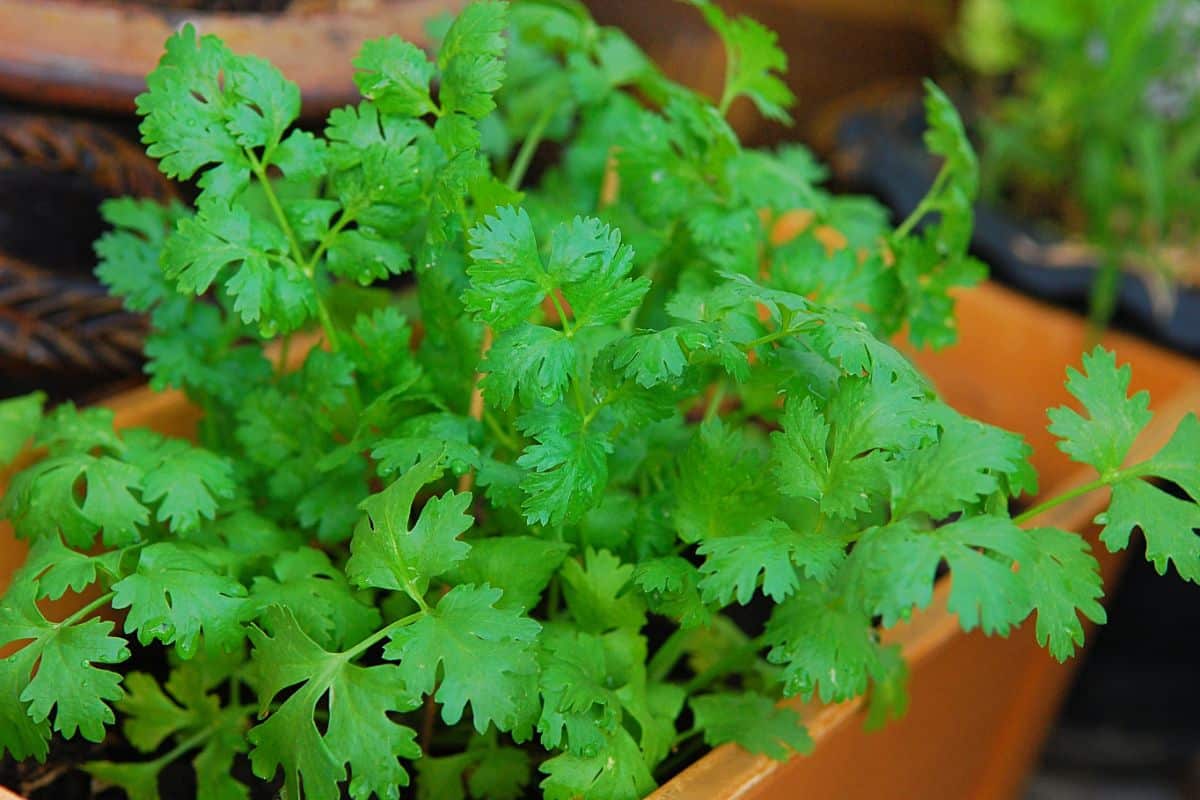
Jump to:
- Why does cilantro bolt?
- 10 tips to keep cilantro from bolting
- 1. Grow plants from seed
- 2. Pick the right seeds
- 3. Know when to plant
- 4. Choose a good planting location
- 5. Keep your plants well-watered
- 6. Add mulch
- 7. Harvest often
- 8. Pinch off your plants
- 9. Grow companion plants
- 10. Try out succession planting
- Frequently asked questions
- Summary
Why does cilantro bolt?
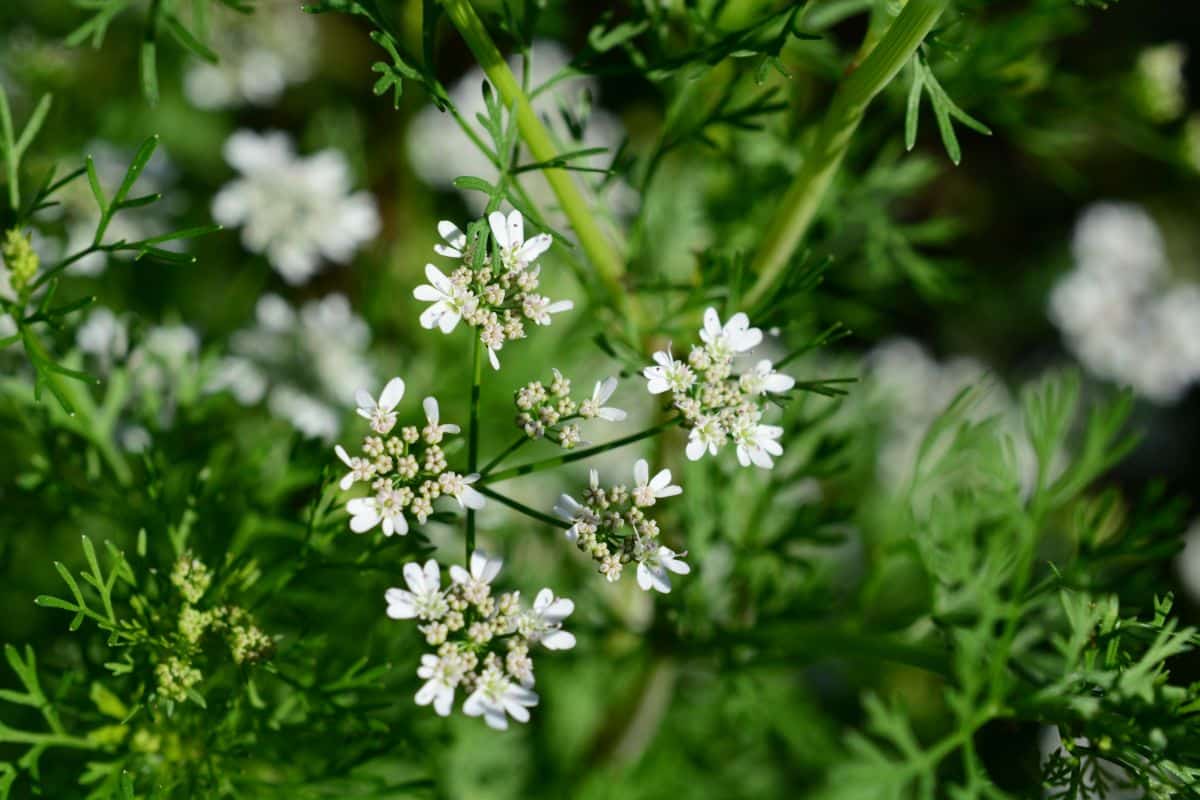
Cilantro is a cool-weather herb that grows best when temperatures are low, and moisture is abundant. Unfortunately, when temperatures rise in summer, cilantro plants begin to die back. When this occurs, cilantro starts to bolt in order to preserve its genes, and this causes the plants to flower and set seeds for the next generation of cilantro plants.
While this survival mechanism has kept cilantro plants going for generations, cilantro can be hard to grow in gardens due to bolting, and this is particularly troublesome in warmer climates. Cilantro begins to bolt when temperatures climb above 85°F. When this occurs, cilantro produces fewer leaves, and its flavor changes significantly too.
If you’ve ever sampled homegrown cilantro that didn’t taste “quite right,” chances are it was from a bolted cilantro plant!
10 tips to keep cilantro from bolting

When it comes to growing cilantro, bolting is inevitable, but you can prolong your cilantro harvest by following the steps below. These steps will help cilantro plants better resist the heat, and it can extend your harvesting window by a few weeks.
1. Grow plants from seed
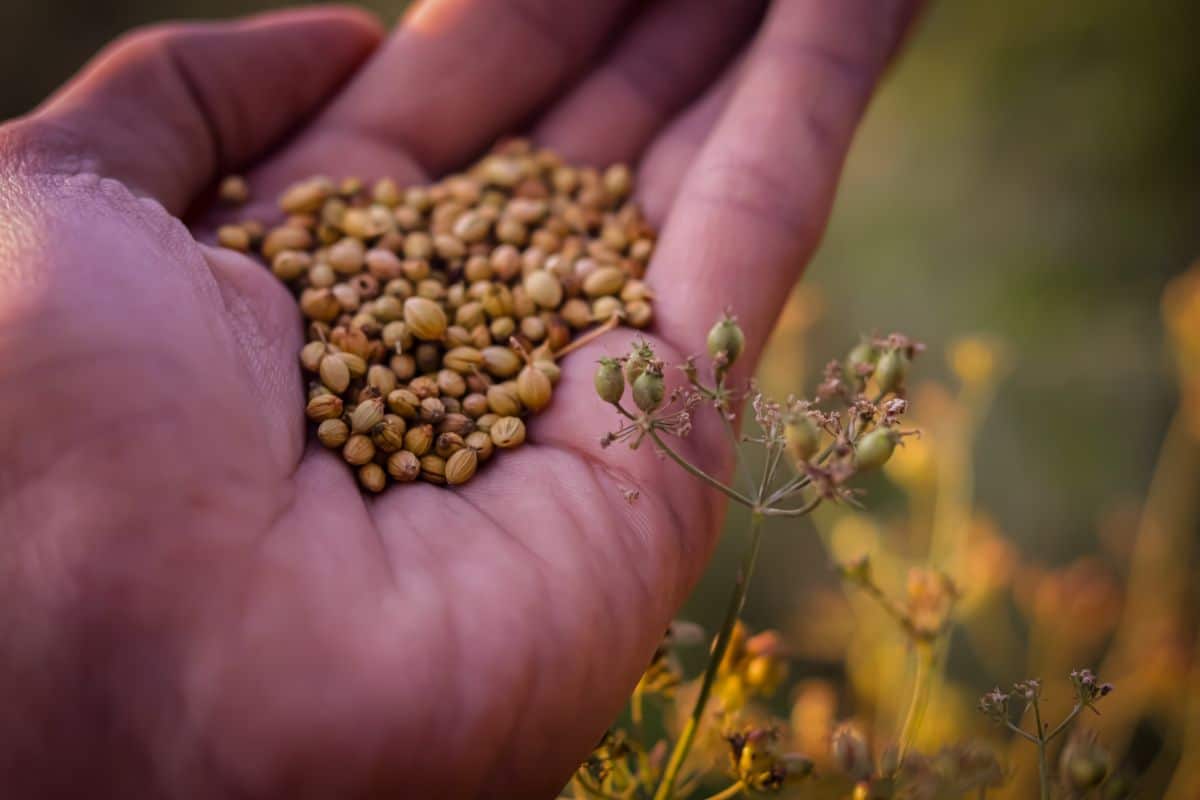
One way to prevent cilantro from bolting as quickly is to grow plants from seeds rather than nursery starts. While plants grown at nurseries are larger and will produce more fresh herbs earlier in the season, the plants are older, and they will bolt faster when temperatures begin to climb. Growing cilantro from seed will allow you to pick the cilantro cultivars that don’t bolt as quickly, and you can plant seeds at the perfect time of the year for your growing zone, which can slow bolting too.
2. Pick the right seeds
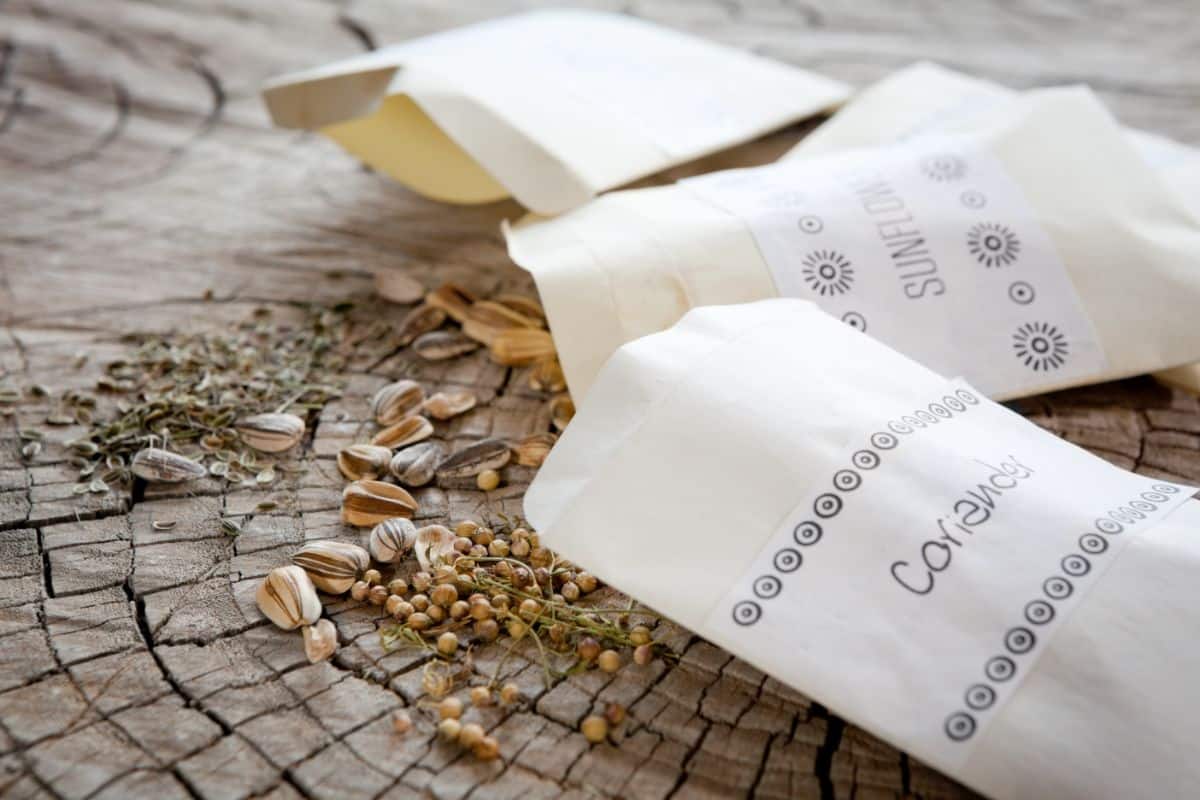
All cilantro will eventually bolt in the heat, but you can slow down this process and grow cilantro plants a bit longer if you choose the right cilantro seeds at the beginning of the season. Some cilantro varieties are slower to bolt than others, which can extend your harvest by a few days or weeks. Varieties like “Slow Bolt” cilantro have greater heat tolerance than other cultivars, and their flavor is less likely to change as soon as temperatures rise.
3. Know when to plant

While you may find cilantro plants for sale at nurseries throughout the summer, that doesn’t mean it’s the right time of the year to plant cilantro! Cilantro is a cool-season crop that grows best in cold weather. That’s why cilantro is mostly grown in spring and fall gardens.
The best time of the year to directly sow cilantro in the garden is in early spring, as soon as the danger of frost has passed. Cilantro can also be planted in the autumn when temperatures are consistently between 50 and 80°F.
While cilantro grows quickly and can adapt to colder grow zones, if you live in a very cold climate, you may want to start cilantro seeds indoors to extend your harvest window a bit. Growing seeds indoors can allow you to plant cilantro seeds a few weeks earlier in spring, which will give your plants more time to mature before summer arrives.
4. Choose a good planting location

Cilantro is an adaptable herb that grows in both full sun or light shade, but if your goal is to slow bolting, you may want to plant cilantro in an area of your garden that has some protection from the bright sun. If you can, plant cilantro in a spot that is sunny in the morning and then receives some light shade in the afternoon. You can also grow cilantro in pots and move the pots around to capture the light as needed.
By providing cilantro with a bit of shade, you can keep your plants cooler and prevent them from getting stressed as early in the summer. Light shade can also slow down evaporation rates and reduce how much you’ll need to water your plants.
5. Keep your plants well-watered

Just as the light shade can prolong your cilantro harvest, keeping your plants well-watered will also slow down bolting. This is because cilantro plants are more likely to suffer heat stress when they’re underwatered.
Aim to provide your cilantro plants with about 1” of water per week. You can determine if you need to water your plants by gently inserting your finger into the soil line. If the top 1” of soil feels dry, it’s time to bring out your watering can!
6. Add mulch
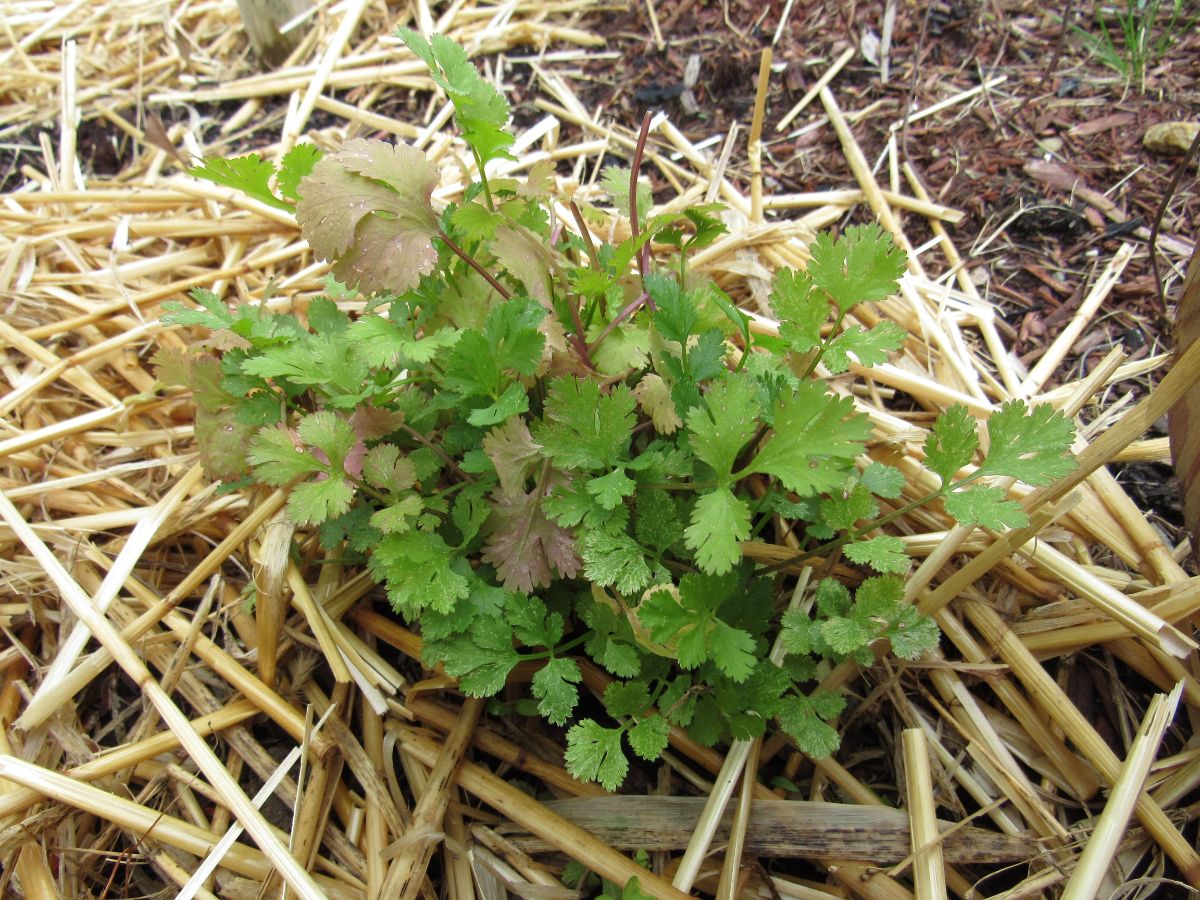
Mulch helps reduce soil evaporation rates, and it can keep plants from drying out as quickly. So if your goal is to reduce stress and prevent cilantro plants from bolting, you may want to add a layer of mulch around the plants to shelter the soil. Organic, natural mulches, like salt marsh hay and weed-free straw, are great choices for vegetable gardens, and applying 1 to 3” of mulch in vegetable and herb gardens will work well for most plants, including cilantro.
7. Harvest often
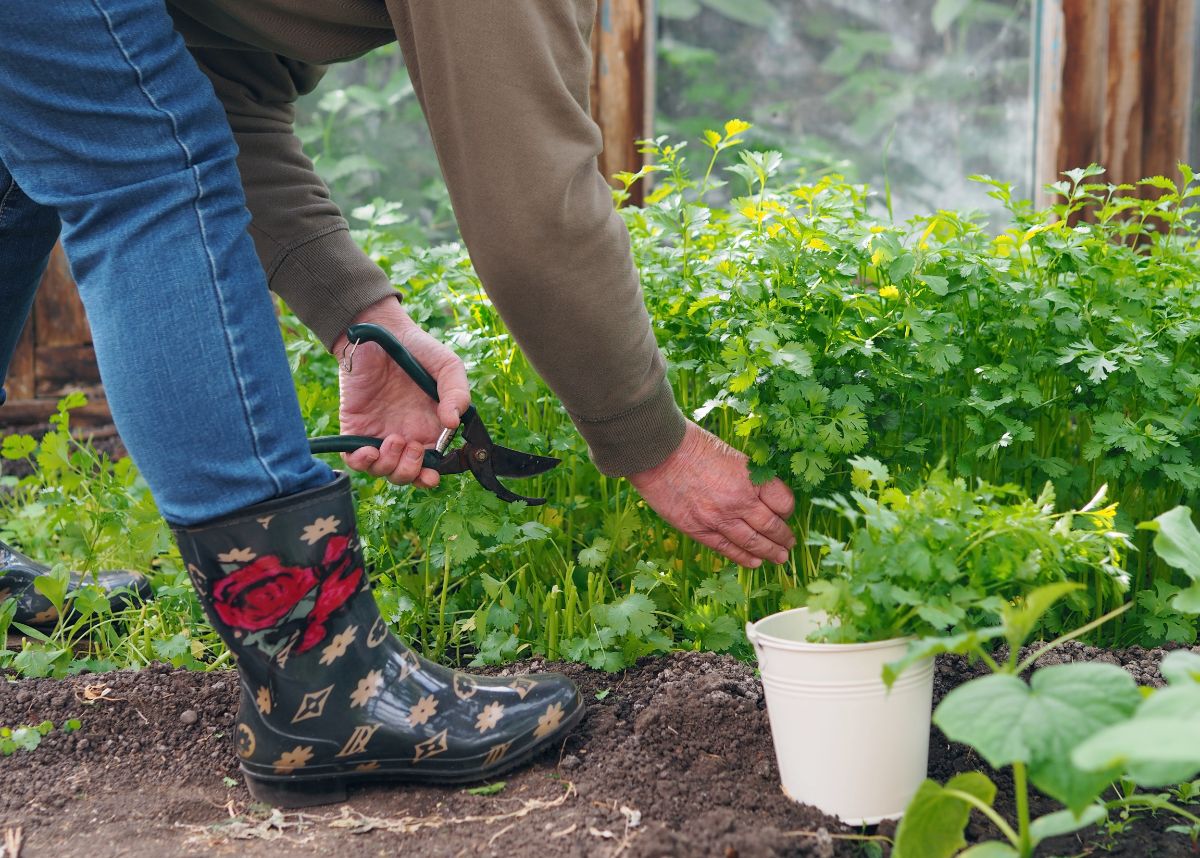
Clipping off cilantro leaves as they grow will provide you with the freshest cilantro for salsa making and other recipes, but it can also keep your plants from bolting as quickly. Harvesting cilantro often encourages plants to continue to produce more leaves from the center of the plant, and it also removes older leaves, which will improve the look of your cilantro. Additionally, frequent harvesting can also snip away any flower stalks that begin to sprout, which can slow bolting down too.
8. Pinch off your plants
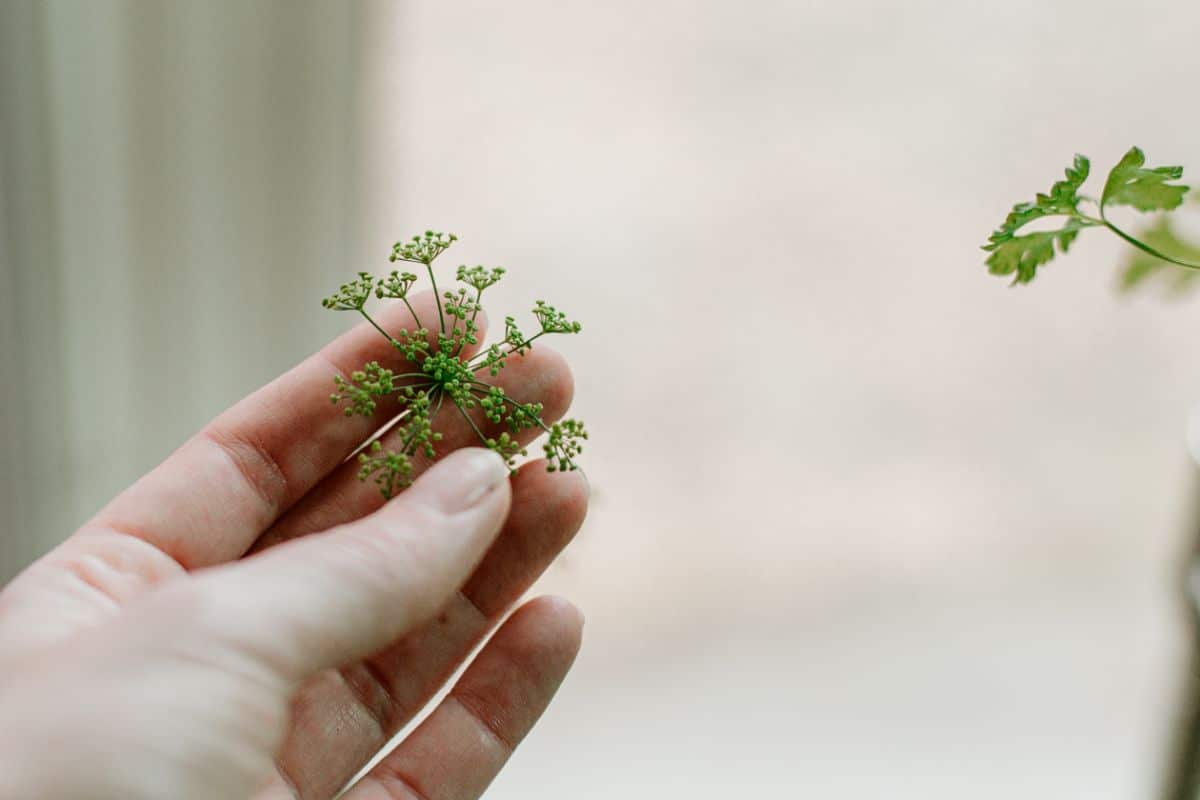
When cilantro plants begin to produce flower stalks, bolting has already begun. But you can keep the process from moving as quickly by pinching off flower stalks whenever you see them. Doing this redirects the plant’s energy toward leaf growth and helps maintain the flavor of the cilantro leaves for a bit longer.
9. Grow companion plants
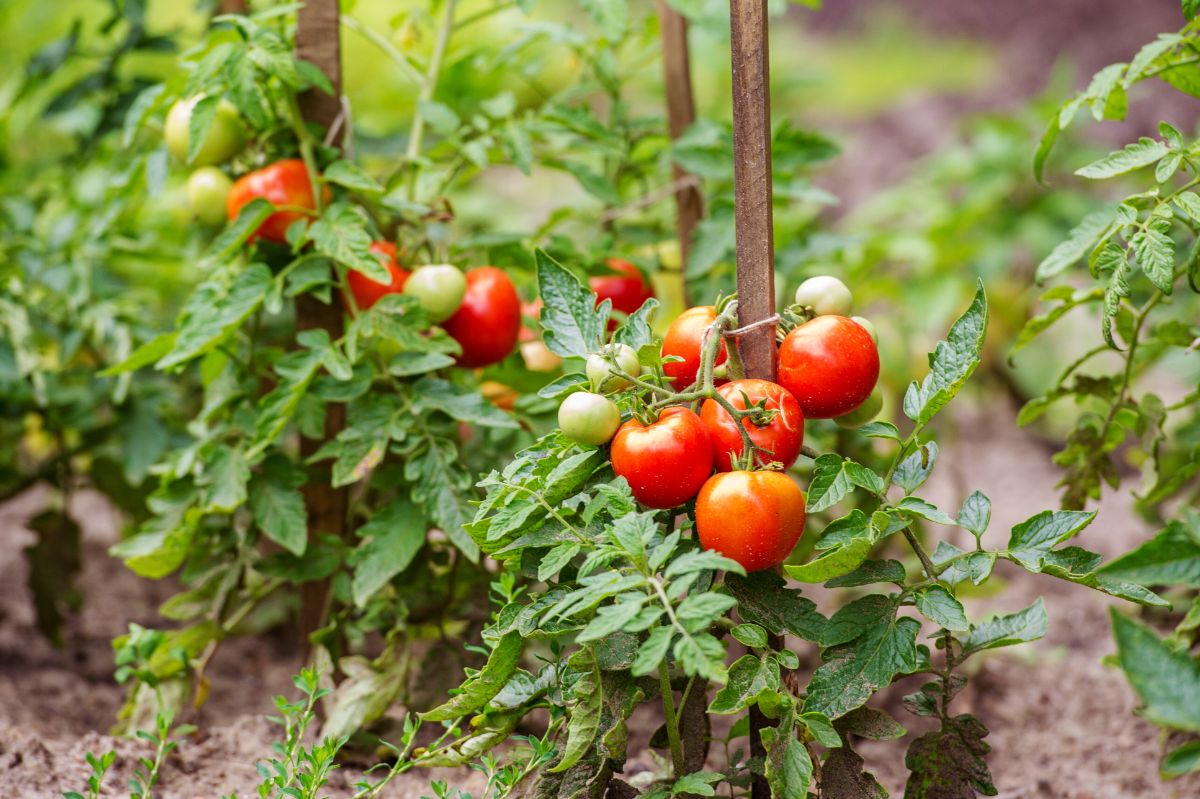
Tall vegetable and herb plants can cast a lot of shadow in gardens, which can cause problems for lower-growing plants… but not cilantro! Just as growing cilantro in the light shade can slow down bolting, keeping cilantro plants in the shadows of larger companion plants can also inhibit bolting and preserve your cilantro for a while longer.
Cilantro doesn’t grow well with many woody-stemmed herbs, like lavender and rosemary, because these plants have different watering needs and prefer different soil types. However, beans, peas, and other legumes are exceptional cilantro companions that can cast a lot of shade, and they will also improve the soil around your cilantro by fixing nitrogen. Leafy greens, like cabbage and kale, can work well as cilantro companions, and tall tomato plants will also offer cilantro extra shade and the flavors of tomatoes and cilantro pair beautifully together in homemade salsas too!
10. Try out succession planting

Even with the right cilantro seeds and proper plant care, cilantro plants will still invariably bolt when temperatures rise. But if you want to grow cilantro for even longer, you can try out succession planting.
Planting cilantro seeds every 2 to 3 weeks throughout the growing season can extend your harvest even further into summer, and it will provide you with even more fresh cilantro for recipes. As the older plants begin to bolt, you will still be able to harvest younger cilantro plants as they mature. With succession planting, you may even be able to grow cilantro throughout the summer!
Frequently asked questions
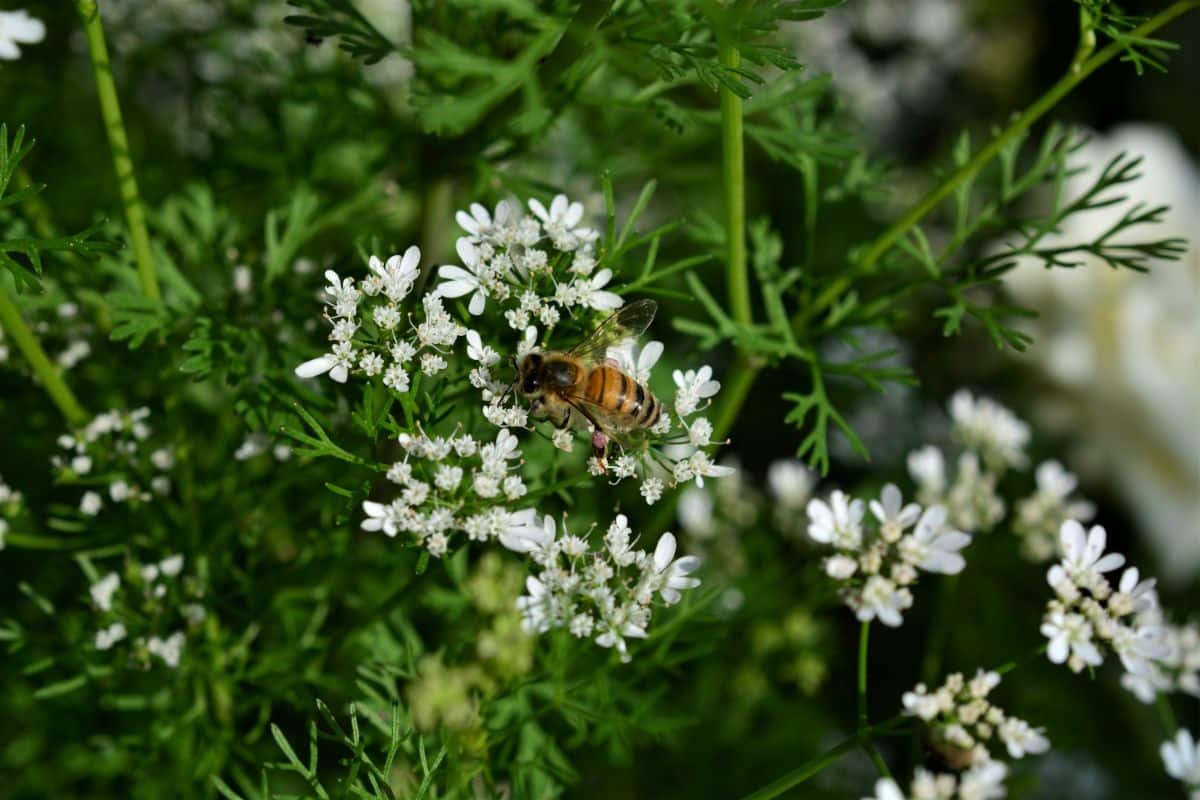
All parts of cilantro are edible, including cilantro flowers and seeds. After bolting, you can use cilantro flowers as garnishes or salad toppers, and dried cilantro seeds (also known as coriander) can be ground into a spice. Additionally, cilantro plants contain a lot of nitrogen, which means they can be composted and turned into a nutrient-rich, dark compost too!
No. Once cilantro plants begin to produce flowers, bolting cannot be reversed; however, you can slow down the process. Pinching back flowers as soon as you see them will inhibit bolting for a little longer, allowing you to get another harvest or two of cilantro leaves in before you’ll need to pull out your plants.
Cilantro seeds, also known as coriander, are one of the most popular spices around, and harvesting them can help you get more use out of bolted cilantro. To harvest cilantro seeds, allow the seeds to dry on the plant until the majority of the seeds are golden brown. Snip the seed heads off the plant and then place them loosely in a brown paper bag indoors and allow them to dry out completely before storing them.
Keeping cilantro plants well-watered and growing them in the light shade can slow down the bolting process significantly, but cilantro plants will eventually bolt. The best way to guarantee that you have a ready supply of cilantro in summer is to succession plant seeds every 2 to 3 weeks throughout the growing season.
You can succession plant cilantro all season long; however, seeds sown in summer may just grow a bit before bolting. However, if you’d like to enjoy cilantro in the autumn, try planting cilantro seeds later in the season when temperatures are between 50 and 80°F. This will ensure that you’ll have plenty of cilantro on hand to make salsa during the canning season!
You can still eat cilantro after it has bolted, but the flavor won’t be as good. Bolted cilantro can be used in recipes, or you can allow the plants to stay in your garden for a bit longer. This will give the cilantro plants time to produce seeds, which you can save for next year’s garden or grind into a homemade spice blend!
Summary
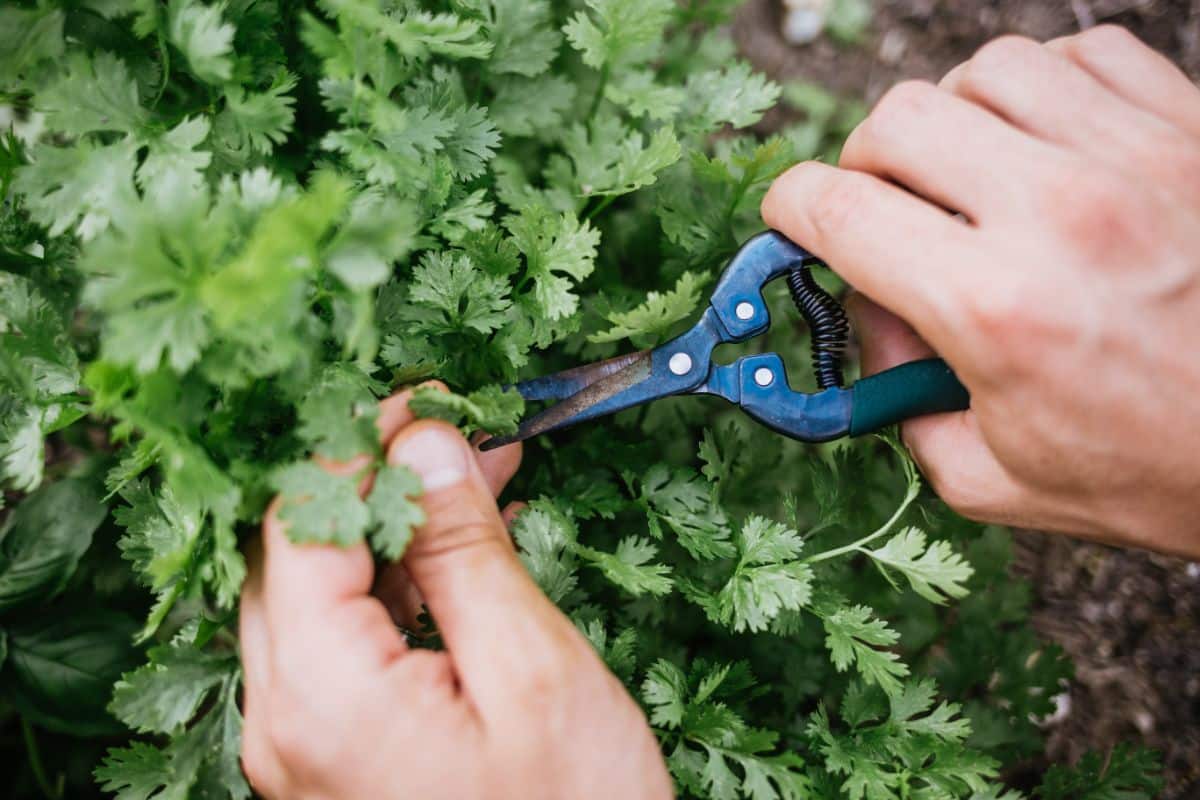
While cilantro’s tendency to bolt can make it a difficult herb to grow in summer, bolting isn’t always bad, and there are some reasons why you may actually want cilantro plants to flower. If you allow cilantro to flower and set seeds, you can gather those seeds later for seed saving, or you can grind them into a powder to make your own coriander. Cilantro flowers are also edible, and they are highly attractive to pollinators and beneficial insects that can control pests in your garden.
As with most things in the garden, growing cilantro is a learning process, and you may find some of these tips work better than others in your growing space. For best results, try as many of the tips as you can, and don’t forget to succession plant cilantro seeds to keep your herb harvest coming!
If you love growing herbs and would like to learn more, check out our guide on less common edible herbs for backyard gardens or read up on how to grow herbs indoors.


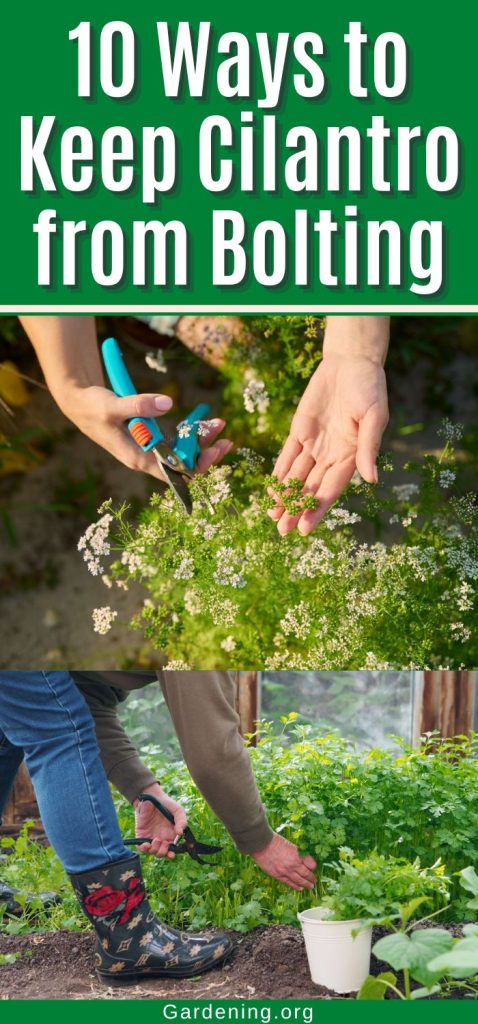
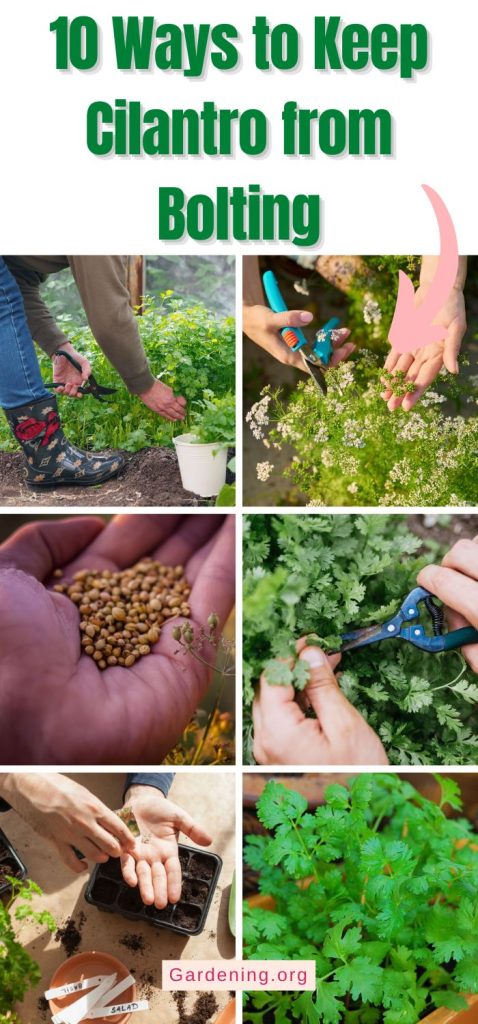

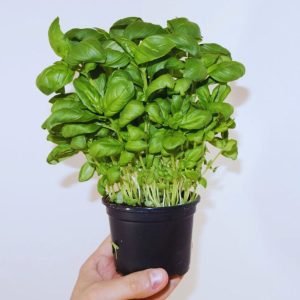
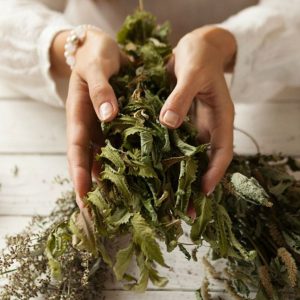
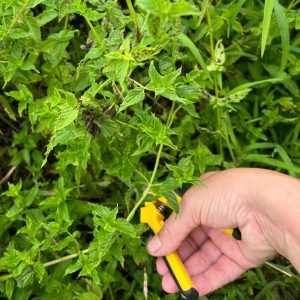

Leave a Reply